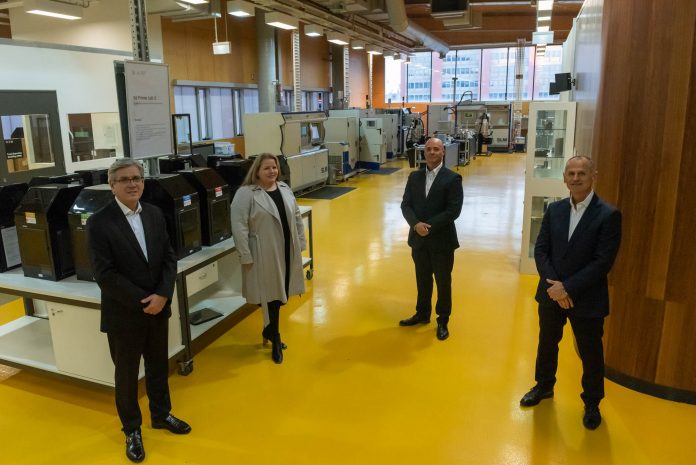
RMIT, Siemens and Festo have signed a strategic Memorandum of Understanding (MoU) to explore major areas of cooperation to help drive workforce transformation for Industry 4.0 in the Australasian region, including the establishment of an Industrial Digital Innovation Hub at RMIT.
The hub will be designed to enable digital innovation at scale in a collaborative effort across different cultures, disciplines, geographical locations and industry environments, eventually linking RMIT in Australia with its Vietnam campuses.
Deputy Vice-Chancellor of RMIT’s College of Science, Engineering and Health, and Vice President for Digital Innovation Professor Aleks Subic said the agreement represented a new model of public-private sector partnership based on collaborative systems leadership at a scale never seen before in Australia.
“It’s time to think big with Industry 4.0,” Subic said.
“An industrial revolution doesn’t discriminate – it impacts every sector and therefore requires a multi-disciplinary approach with a holistic view across the entire continuum of education and training from TAFE through to Higher Education.
“We expect as many as 10,000 RMIT students across a range of disciplines in engineering, science, technology, health and design to access some of the most advanced industrial software available over the next three years,” Subic said.
“It has never been more important to provide this type of industrial digital environment for the development of workforce of the future, that allows collaborative interdisciplinary teams to co-design and co-create remotely across borders and industry sectors.”
The Industrial Digital Innovation Hub will be established thanks to a significant hi-tech industrial software grant by Siemens and managed out of the RMIT Advanced Manufacturing Precinct, a key Industry 4.0 facility focused on digital manufacturing and design.
Siemens Australia Chairman and CEO, Jeff Connolly said he was excited by the possibilities of this announcement.
“The fourth industrial revolution describes the impact on manufacturing, but the reality is that it has significant implications for energy, healthcare, transport, building and construction, engineering, sustainability as well as advanced manufacturing – all part of the RMIT approach,” Connolly said.
“The announcement comes at a time when the COVID-19 pandemic is fundamentally forcing Australians and Australian businesses to look for new ways to keep the engines of the economy running.
“It’s fitting to establish an Industrial Digital Innovation Hub because digitalization has no borders and we have to learn how our economy can participate in ways which won’t require us to be in a factory or an office or at a site, Connolly said
The new hub will be the cornerstone of a number of initiatives being explored as part of the MoU by the three organisations in a collaborative approach to education and training.
Festo Didactics’ Australian and New Zealand Manager, Damien Sinclair said digitalization and the integration of I4.0 technologies are opening a world of opportunity for the future workforce.
“As we encompass more Industry 4.0 and advanced manufacturing technologies, we also see an increase in cohesion and interlinking of learning. No longer is there such a divide within different areas of academia and in industry,” he said.
“COVID-19 has changed our mindset for how we work and what is possible.
“It has created a great transformation in our learning environment, showing how opportunities exist and how we may further embrace digitalization, virtual and mixed reality platforms and continuous digital learning as key parts of the future in education, manufacturing and broader workforce environments.”
Image courtesy of Siemens




















